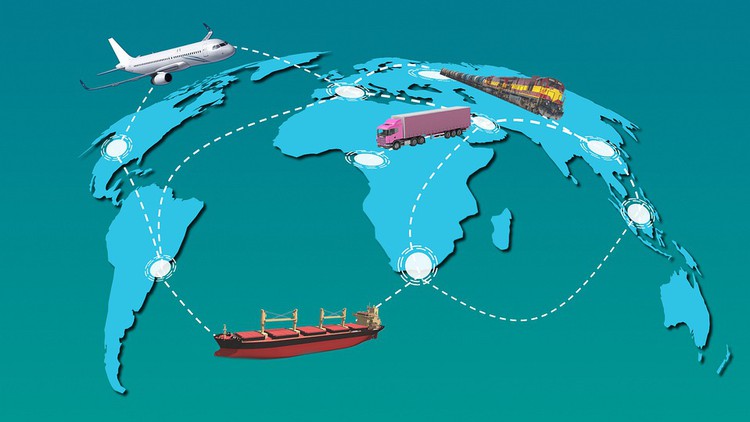
Analytics with Python , Chat GPT & Excel
What you will learn
Become Supply Chain Data Scientist Made Easy with Chat GPT
From Novice to Pro: A Comprehensive Guide to Mastering Supply Chain Analytics
Easily write Python Code with the help of Chat GPT
Data-Driven Insights Made Easy
The Power of Data in Your Hands
Embarking on the Analytics Journey
A Beginner’s Guide to Supply Chain Optimization
Data Driven Decision Making
Become Supply Chain Data Analyst
Become Supply Chain Data Engineer
Description
“Automation and AI have the potential to disrupt certain job roles, but they also create new opportunities and transform industries.”
Are you ready to elevate your supply chain management skills to the next level? In today’s fast-paced world, staying updated with cutting-edge technologies like AI and analytics is no longer just an advantage; it’s a necessity. That’s why we’re thrilled to introduce our brand-new course: “Supply Chain Analytics using Python and Chat GPT”!
With the increasing demand for professionals skilled in supply chain analytics, learning this domain can open up various career opportunities. Supply chain analysts, data scientists, operations managers, and supply chain consultants are among the roles where expertise in supply chain analytics is highly valued.
— Course Highlights:
1️⃣ Gain In-Depth Knowledge: Dive deep into the realm of supply chain analytics and learn how to leverage Python and Chat GPT to extract valuable insights, optimize processes, and drive informed decision-making.
2️⃣ Python for Supply Chain: Acquire the essential Python programming skills required for data analysis, manipulation, visualization, and modeling in the context of supply chain management. Unleash the power of pandas, NumPy, and matplotlib to handle real-world data effectively.
3️⃣ AI-Powered Insights: Discover how to harness the capabilities of Chat GPT, a cutting-edge language model, to automate tasks, generate forecasts, and uncover hidden patterns in your supply chain data. Leverage AI to make smarter, data-driven decisions.
4️⃣ Practical Use Cases: Explore real-world applications of supply chain analytics, such as demand forecasting, inventory optimization, supplier management, risk assessment, and more. Learn through hands-on projects and case studies that simulate real industry scenarios.
Learning Supply Chain Analytics can provide several benefits and advantages in today’s business landscape. Here are some reasons why learning Supply Chain Analytics can be valuable:
- Optimization of Operations: Supply Chain Analytics enables you to analyze and optimize various aspects of the supply chain, such as inventory management, demand forecasting, production planning, and logistics.
- Improved Decision Making: Supply Chain Analytics provides insights into the supply chain processes, helping you make data-driven decisions. It enables you to identify trends, patterns, and potential risks in the supply chain, allowing you to take proactive measures to mitigate issues and make informed strategic choices.
- Enhanced Efficiency and Cost Savings: By applying analytics techniques to supply chain data, you can identify inefficiencies, bottlenecks, and areas for improvement.
- Demand Forecasting and Planning: Supply Chain Analytics helps in accurate demand forecasting and planning, allowing businesses to align their inventory levels, production capacities, and distribution networks with anticipated customer demand.
- Supply Chain Risk Management: Analytics can help identify and assess potential risks in the supply chain, such as disruptions in logistics, supplier delays, natural disasters, or geopolitical events.
- Enhanced Customer Service: Supply Chain Analytics enables businesses to gain insights into customer behavior, preferences, and buying patterns.
- Competitive Advantage: In today’s competitive business landscape, leveraging analytics in the supply chain can provide a significant competitive advantage.
- Sustainability and CSR: By analyzing supply chain data, businesses can identify opportunities to reduce environmental impact, optimize transportation routes, minimize waste, and support ethical sourcing practices.
- Future-Proofing: As businesses become more data-driven and rely on analytics for decision-making, understanding and applying analytics in the supply chain becomes crucial. Learning supply chain analytics equips you with skills that are in high demand and can future-proof your career in an increasingly data-centric business environment.
Overall, learning Supply Chain Analytics empowers businesses and professionals to make informed decisions, optimize operations, drive efficiency, and gain a competitive edge in the complex and interconnected world of supply chains.
“Job cuts due to AI are a reminder of the need for continuous learning and upskilling to stay relevant in a rapidly evolving job market.”
Content